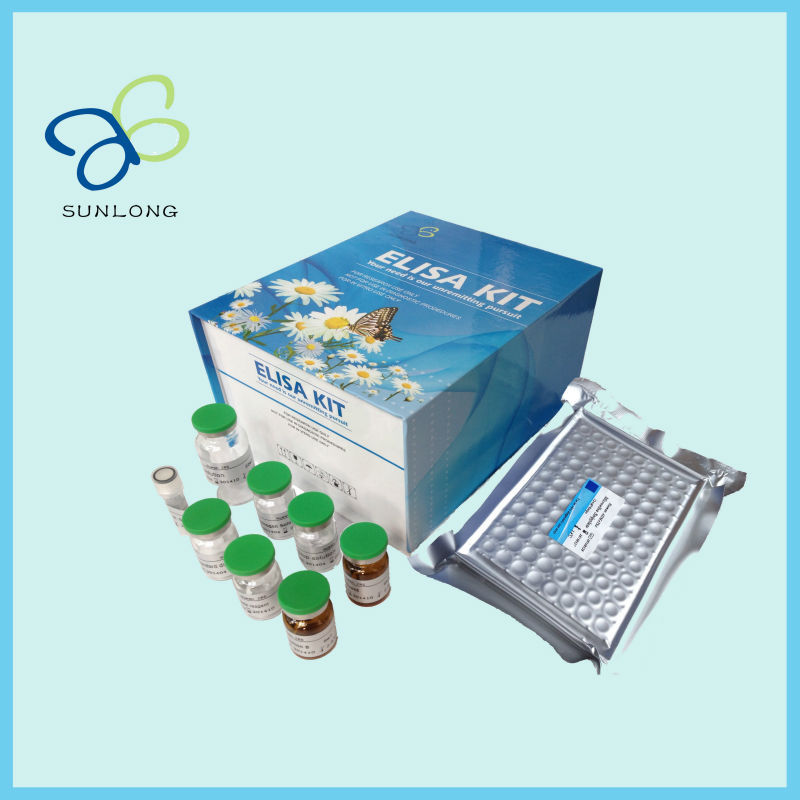Human C-telopeptide of type Ⅰ collagen,CTX-Ⅰ ELISA Kit
Catalog No :
CAS Number :
Brand :
In Stock
Sample Volume:50ul
Wavelength:450nm
Assay range:0.1ng/ml-7ng/ml
Sensitivity:0.03ng/ml
Standard:9ng/ml
Specifications:
| Application | ELISA-Based Assays |
| Storage Temperature | 2-8°C |
| Product Type | Elisa Kit |
| Product Grade | Molecular Biology |
Human C-Telopeptide of Type I Collagen (CTX-I) ELISA Kit
The Human C-Telopeptide of Type I Collagen (CTX-I) ELISA Kit is a reliable and sensitive assay designed for the quantitative measurement of CTX-I levels in human serum, plasma, culture media, and other biological fluids. Using a Sandwich-ELISA technique, this kit provides precise and reproducible results, making it ideal for research in bone metabolism, osteoporosis, and collagen turnover.
Purpose
- Quantification of CTX-I Levels:
- Measures CTX-I concentrations as a biomarker for bone resorption and collagen degradation.
- Sample Compatibility:
- Designed for serum, plasma, and other biological fluids.
Principle
The assay employs a Sandwich-ELISA technique to provide specific and accurate quantification of CTX-I. Below is the workflow:
- Pre-Coated Plate:
- Microelisa stripplate wells are pre-coated with an antibody specific to CTX-I.
- Sample and Standard Addition:
- Standards and samples are added to the wells, allowing CTX-I in the sample to bind to the immobilized antibody.
- HRP-Conjugated Detection:
- A Horseradish Peroxidase (HRP)-conjugated antibody specific for CTX-I is added, forming a sandwich complex.
- Washing Step:
- Free and unbound components are washed away to reduce background noise.
- Substrate Reaction:
- TMB substrate solution reacts with HRP, producing a blue color in wells with CTX-I.
- Stop Reaction and Measurement:
- A stop solution is added, changing the color from blue to yellow. Optical density (OD) is measured at 450 nm using a spectrophotometer.
- Quantification:
- CTX-I concentrations are determined by comparing OD values to a standard curve.
Key Features
- High Sensitivity and Specificity:
- Accurately detects low levels of CTX-I with minimal cross-reactivity or interference.
- Wide Sample Compatibility:
- Suitable for serum, plasma, culture media, and other biological fluids.
- Quantitative Results:
- Provides precise measurement of CTX-I concentrations using a standard curve.
- Ease of Use:
- Includes pre-coated plates and ready-to-use reagents for streamlined workflow.
- Reproducibility:
- Ensures consistent and reliable results across multiple experiments.
Kit Components
- Pre-coated Microelisa stripplate.
- CTX-I standards for standard curve generation.
- HRP-conjugated CTX-I detection antibody.
- TMB substrate solution.
- Stop solution.
- Wash buffer.
- Sample diluent.
- Instruction manual.
Applications
- Bone Metabolism Research:
- Study bone resorption markers in metabolic bone diseases.
- Osteoporosis Studies:
- Monitor collagen degradation and assess treatment efficacy.
- Collagen Turnover Analysis:
- Investigate collagen breakdown in various conditions, including arthritis and cancer metastasis.
- Drug Development:
- Evaluate the impact of therapeutic interventions targeting bone resorption.
- Clinical Diagnostics:
- Support diagnostics for bone disorders and metabolic diseases.
Advantages
- High Accuracy:
- Ensures precise and reproducible quantification of CTX-I.
- Convenient:
- Ready-to-use reagents reduce preparation time.
- Versatile:
- Compatible with a variety of biological sample types.
- Reliable:
- Provides consistent results for robust data interpretation.
Assay Protocol Summary
- Add standards or samples to the pre-coated wells.
- Incubate with HRP-conjugated CTX-I antibody.
- Wash to remove unbound components.
- Add TMB substrate to develop color.
- Stop the reaction and measure OD at 450 nm.
- Calculate CTX-I concentrations using the standard curve.
Storage and Stability
- Store all kit components at 2–8°C to maintain reagent integrity.
- Avoid repeated freeze-thaw cycles to ensure assay reliability.
The Human C-Telopeptide of Type I Collagen (CTX-I) ELISA Kit is an essential tool for quantifying CTX-I levels in biological samples. Its high sensitivity, specificity, and user-friendly design make it invaluable for research in bone metabolism, collagen turnover, and related disorders.




 0
0
